Editorials
‘Rollerball’ Turned a 1970s Cult Classic into an Early 2000s Studio Disaster [Revenge of the Remakes]

In life, spewing hate comes easy; finding the good takes effort. That’s my mantra for “Revenge of the Remakes.” Get dirty and identify value where others hastily — maybe unfairly — laid harsh criticisms. Any remake, in any genre, faces biased outrage from peanut galleries who refuse to remove their nostalgia goggles. It’s easy to prey on the hate clickers out there, which is why I use this column as a voice for the misunderstood and wrongly delegitimized. A remake isn’t trash because it’s a remake, there’s more to the equation.
That said (and believed), not all remakes are created equal. With soaring highs come subterranean lows. Sometimes remakes are nothing but a copy-and-paste cash grab, devoid of creative ambitions. These examples fuel smear campaigns about remakes at large — and today, we’re dissecting one of the worst.
John McTiernan’s Rollerball is an unprecedented studio disaster that’s inarguably inferior to Norman Jewison’s 70s dystopian classic of the same name. For every compliment I’ve paid a remake when adapting an original film’s social commentary anew or bringing a fresh perspective to visual storytelling, Rollerball (2002) stubbornly does the opposite. Jewison feeds off capitalist anxieties that haunt William Harrison’s short story “Roller Ball Murder” (Harrison wrote the screenplay for Jewison’s film as well), where McTiernan crystalizes, pulverizes, and snorts the sweat of X-Games celebrities for inspiration. It’s a brilliant representation of what we all fear Americanized remakes can look like at their lowest. Rollerball is as bad as y’all think Joseph Kahn’s Torque is.
Am I taking some liberties writing about Rollerball on a horror website? No! Rollerball (1975) imagines a world where corporations have replaced government control and feed the masses televised violence to keep them docile. Thems be heavy dystopian horror vibes. Leave your genre classification pettiness at the door, please.
The Approach
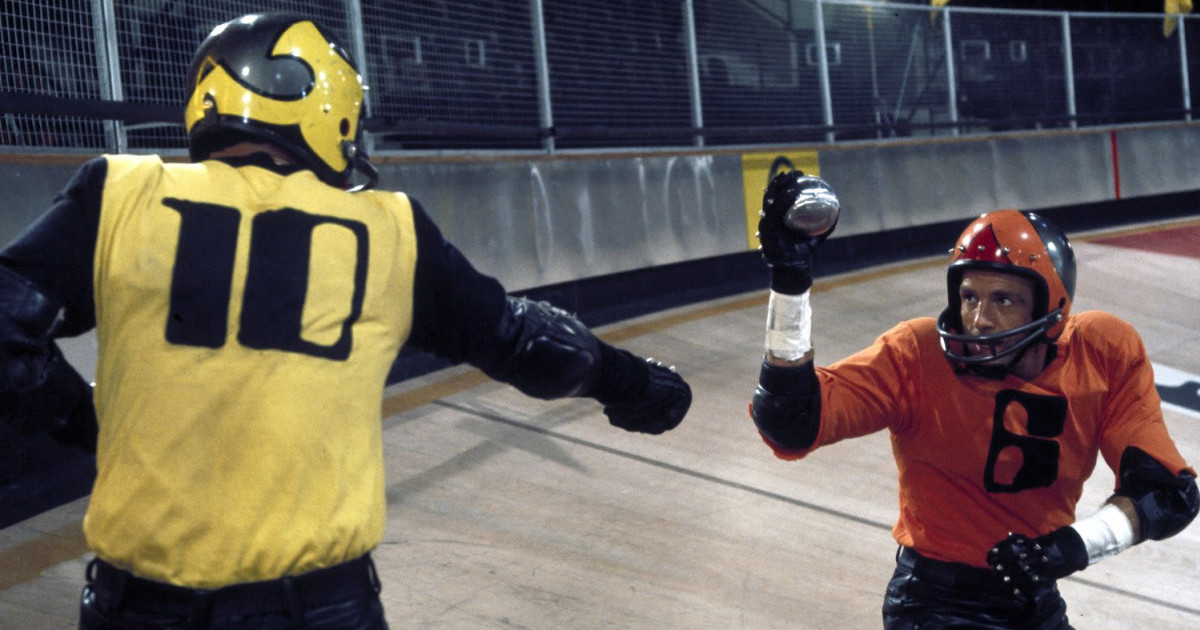
‘Rollerball’ (1975)
Imagine 1975’s Rollerball without all that pesky consumerism analysis, terrifying monopolistic agendas, and genuine warning signs against where American ideals are headed far away in 2018. That’s what McTiernan apparently fought to focus on, the video game version of Rollerball aimed at pre-teens who want to sneak watches on HBO during sleepovers. It’s packed with gawking female nudity and violence for the sake of violence, avoiding worldview stances that’d threaten its rotation in syndicated cable movie marathons. Unknown sources* reported that the script’s first draft was considered to be quite impressive and representative of the original’s themes (before co-writer John Pogue completed a revision overhaul), yet McTiernan wasn’t a fan because it included too much social commentary (parallelling Jewison’s original).
*Rollerball (2002) was plagued by issues behind the scenes, from studio interference to wiretapping scandals that’d send McTiernan to jail, but I could find no specific quote for this attribution. The closest I got was an IGN script review that mentions: “This 99-page draft by John Pogue (The Skulls) is a rewrite of earlier revisions made by David Campbell Wilson & Howard Rodman to Larry Ferguson’s initial draft.” All other information links to then-popular film bloggers like disgraced Ain’t It Cool sex pest Harry Knowles — in addition to MGM’s publicized date changes, reshoots, and test screening comparisons — so it’s worth taking with a grain of salt, despite leaking alongside other confirmed information.
In McTiernan’s outright terrible remake, eventual Benchwarmers 2 star Chris Klein plays NHL hopeful Jonathan Cross. It’s the modern era (2000s), and we meet Cross participating in underground street luge races to establish this thrill-seeking personality. Marcus Ridley (LL Cool J) approaches Cross with an offer to participate in the world’s fastest-growing sport — Rollerball. It’s not long before Cross joins the Zhambel Horsemen in Kazakhstan and becomes Rollerball’s hottest star, impressing owner and promoter Alexi Petrovich (Jean Reno). Cross embraces the high life of nightclub VIP treatment, expensive sports cars, and exceptional protection in countries otherwise ravaged by poverty, until Petrovich’s desire to increase ratings leads to a violent uptick in injuries across Rollerball rosters.
Reading into the myriad of now public boardroom decisions that stripped any cultural flourishes or flakes of personality, you’ll find orders to trash Brian Transeau’s test screening score for being “too Arabic,” replaced by Eric Serra’s industrial alt-2000s rhythms. Ain’t it Cool also reported MGM gutted McTiernan’s first cut for being “too Asian,” and digitally covered much of the nudity McTiernan deemed so necessary to the plot of Rollerball (peep a single locker room image comparison showing the before and after). The goal was to release a PG-13 cut in theaters with the highest probability of mitigating what was sure to be a massive bust. The result was 90ish minutes of whatever skeletal remains were left after reshoots and trimming sessions (the R-rated cut would later hit physical media and digital).
Does It Work?
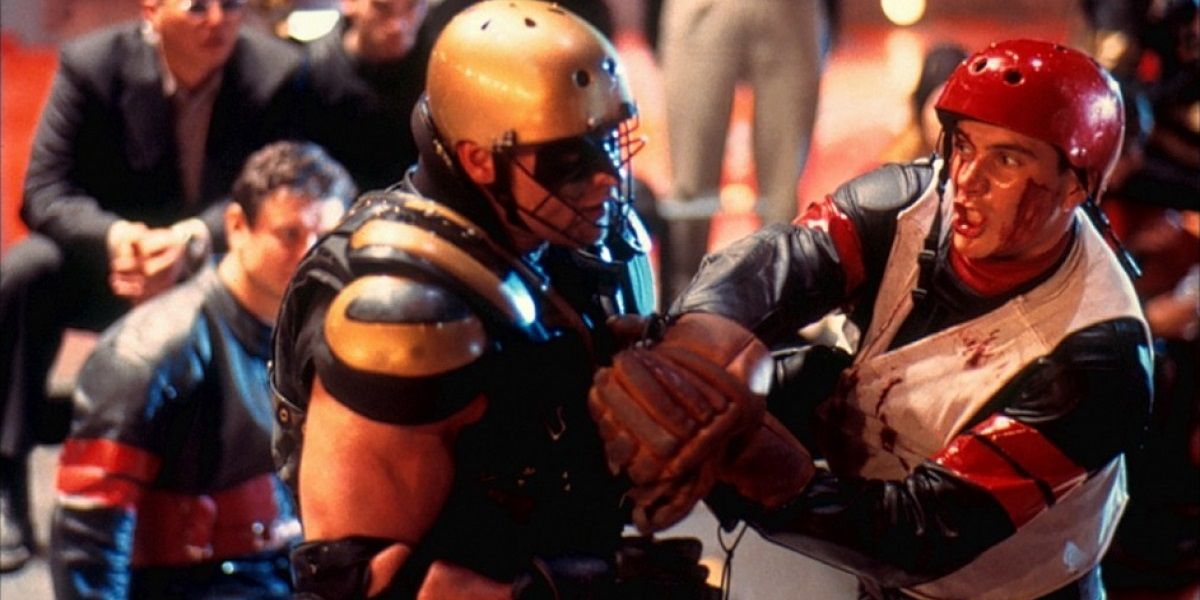
‘Rollerball’ (2002)
McTiernan handles Rollerball (2002) with the curiosity of a prepubescent teenager who spends their downtime watching “Viva La Bam” or downloading pornographic JPEGs on LimeWire (we were all noisy, horny, obnoxious once). It’s a trainwreck not even fit for ESPN8 The Ocho. Jonathan Cross isn’t worth the gum that Jonathan E. would scrape off his boot. Cross’ crisis of conscience doesn’t develop past “money good, violence bad,” and his relationship with motorcycle maven Aurora “The Black Widow” (Rebecca Romijn) is hardly a new interpretation of Jonathan E.’s stolen marriage. McTiernan doesn’t want to challenge his audience and, in doing so, vaporizes what makes Jewison’s futuristic barbarism so stingingly prescient and despicably evergreen by today’s economic class standards.
The game of Rollerball gets a facelift, but bigger ramps for rad tricks and elevated rabbit holes don’t make for more intense rollerblading action. McTiernan’s drive to promote Rollerball as this “sports entertainment” phenomenon à la WWE is soulless and grotesquely shot, failing to replicate the marathon competitions that James Caan (as Jonathan E.) and his crew endured as Houston ballers. Former ECW CEO and current WWE personality Paul Heyman steals most scenes as America’s commentator (also peep a Shane McMahon cameo), explaining the rules of Rollerball aloud while beating audiences over the head with unsubtle narration that’s otherwise easily understood throughout Jewison’s athletic deathmatches. Rollerball (2002) was supposed to be the electric hyperfixation on league theatrics built on adrenaline-pumping excitement, but that’s a far cry from the result. McTiernan and MGM sand Rollerball (2002) down until it’s a collection of goofy rink gameplay and dunderheaded swerves around anything that could confuse American audiences, sinking continuity and any real point to this woefully misguided revamp.
There’s a pungent ickiness to transporting Rollerball somewhere lawless enough where such deplorable behavior could exist: anywhere international. Jewison holds the world culpable; McTiernan makes a point of plucking Cross and Ridley out of America. Whatever’s left of Ferguson and Pogue’s screenplay sidesteps making any thematic assertions about Petrovich targeting mining territories or the protests raging outside Rollerball arenas. The closest McTiernan gets to political commentary is dressing Petrovich’s exploited hostesses in gilded dictator’s costumes with holes cut out so we can see every boob in the room, and even then, it’s embarrassingly naked. Rollerball (2002) feels like it should be a fictional movie shown in Idiocracy as a 2000s Hollywood satire, and I mean that with the least flattering implications.
The Result
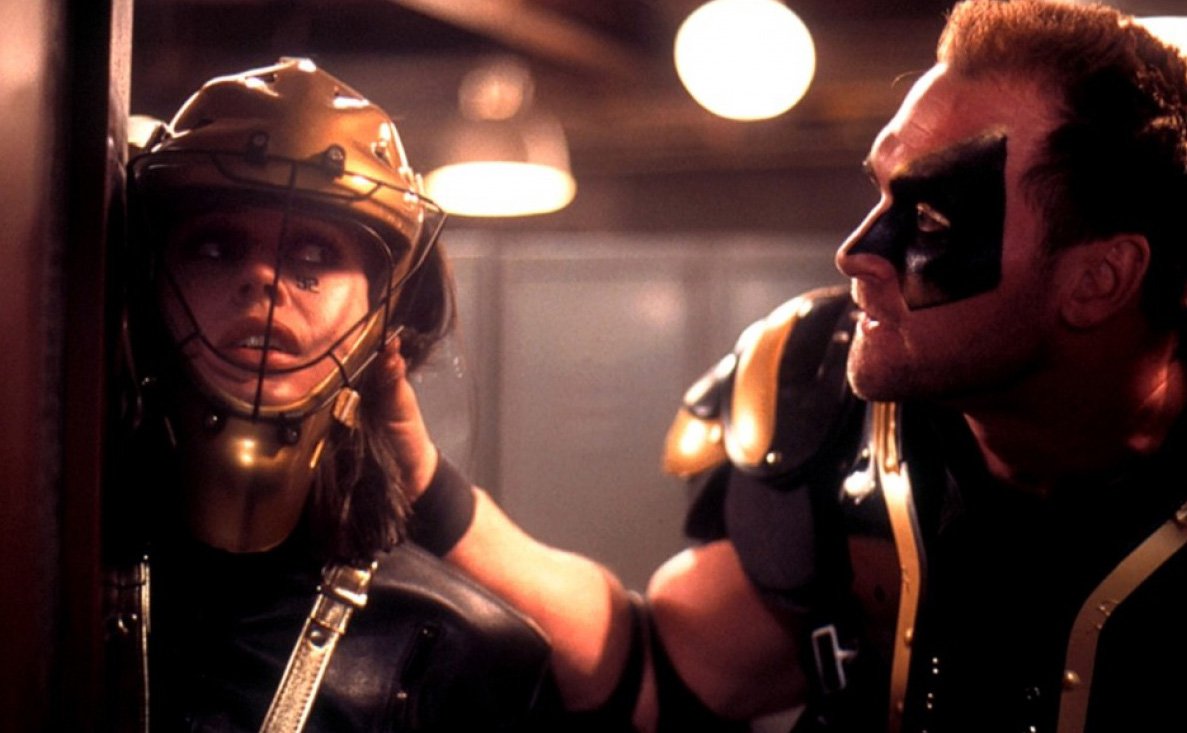
‘Rollerball’ (2002)
Rollerball (2002) drags itself from a toxic cauldron of bad ideas, rampant studio interference, and about seventy Red Bulls. It’s like a thirteen-year-old watched the trailer for Rollerball (1975) and was asked to scribble some storyboards based on what they remembered. It does everything a good remake doesn’t by showing no reverence for the original. McTiernan grasps all the wrong takeaways you could muster from a drunken Rollerball (1975) screening and blends them with heinous signatures born from the nu-age 2000s. On a purely conceptual level, there’s no better case study for how not to approach a remake.
Beyond ideas, beyond the 2000s VH1 reality show levels of objectification, beyond the studio tampering, Rollerball (2002) is just a poorly crafted movie. Klein’s tryout to be America’s next action heartthrob is a monotone whiff, outshined by supporting roles like future Leatherface Andrew Bryniarski as a grunting muscular brute. Where Jewison holds propulsive cinematography on extended rollerskating sequences that inflate the game’s thrills, McTiernan’s visual style is hack-and-chop editing that makes mincemeat of Rollerball competitions. Oh, and don’t even get me started on that grainy-as-sin, marathon-length nightvision chase where Cross and Ridley attempt to escape Petrovich’s organization — what a bafflingly ugly scene that somehow saw the dark of theaters. Between laughably emotionless character deaths, barstools that deflect shotgun blasts, and the amateurish dents all over Rollerball (2002), I don’t know if you can find a worse widely released title in the 2000s.
There are fleeting seconds, mere glimmers of hope, that make us believe there’s a better Rollerball underneath the rubble of McTiernan’s overproduced pile of spare parts. Motorcycles fit a rider’s unique tastes, and player gear exhibits customization from demon masks to frilly tutu’s, which brings a tad more attitude to Rollerball 2.0. Cue Slipknot’s “I Am Hated,” Rob Zombie’s “Feel So Numb,” P.O.D.’s “Boom,” and other aughts nu-metal classics that stack banger after banger for the film’s soundtrack. Like I said, Rollerball (2002) had all the makings to match Torque in its high-speed and unapologetically 2000s ambitions — and now I really wish Joseph Kahn had John McTiernan’s job.
The Lesson
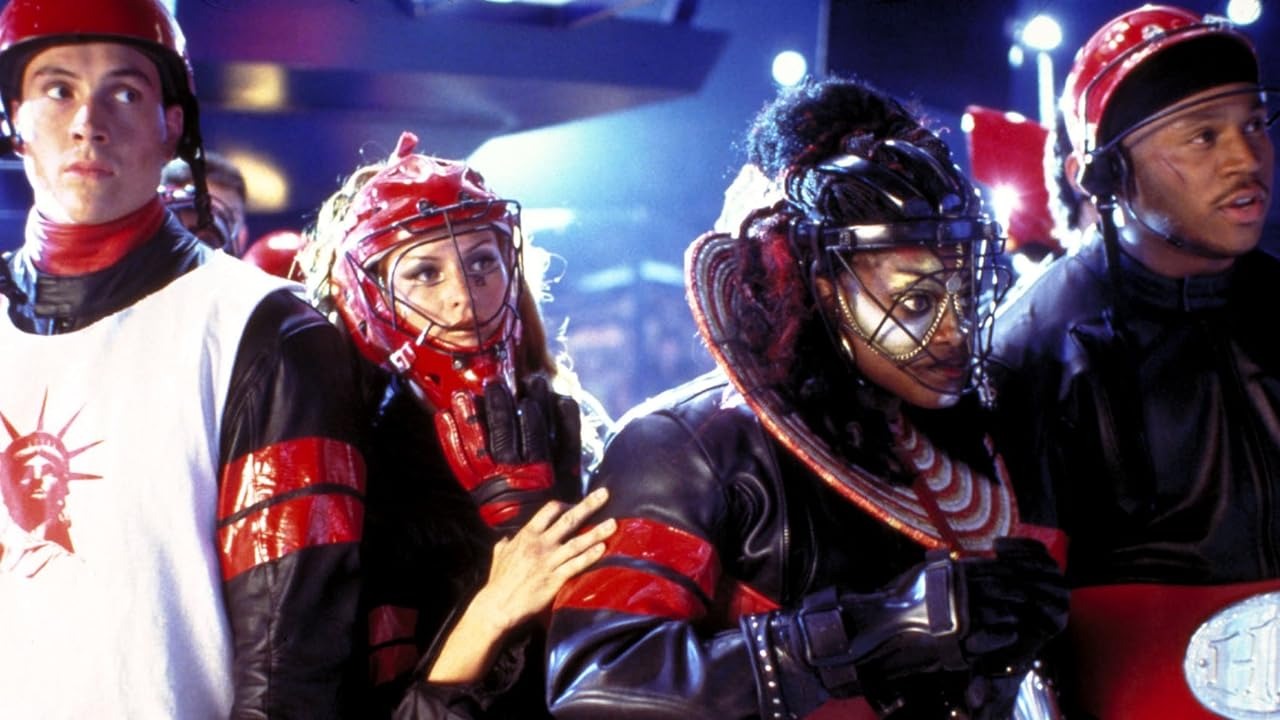
‘Rollerball’ (2002)
Respect. Respect is the magic word when it comes to remakes. McTiernan does not respect Harrison’s literature or Jewison’s adaptation, nor does MGM. If McTiernan denied the essential social commentary of 1975’s Rollerball, he’s to blame. If MGM edited out the plot, that’s their issue.
Either way, Rollerball (2002) forgets where it came from — nay, outright ignores what matters — and pays the ultimate price.
So What Did We Learn?
● Chris Klein wasn’t long for the leading man conversation, no matter how much he looks like Point Break Keanu Reeves in that opening scene.
● If you flashed your talent by directing Die Hard and Predator, it doesn’t matter — you could still bomb as hard as Rollerball.
● If you can’t find the pulse of an original film, your remake will probably die on arrival.
● Even worse, if you’re not even going to try to honor an original with your remake, you better have style for days and execution that’s out of this world.
Imagine going to jail because of 2002’s Rollerball. ROLLERBALL SENT JOHN MCTIERNAN TO JAIL. McTiernan lied to an FBI investigator when asked if he hired infamous Los Angeles private eye Anthony Pellicano to illegally wiretap producer Charles Roven because he disagreed with Roven about the approach to Rollerball. McTiernan served 328 days of his 12-month sentence in one of “America’s 10 Cushiest Prisons,” as per Forbes (in Yankton, South Dakota), before returning to his Wyoming ranch under house arrest. That’s forever on his record. A Rollerball related crime. Well, a Rollerball related crime besides making someone pay to watch Rollerball.

Editorials
‘The Strangers: Chapter 1’ – Six Things We Learned from the Blu-ray Commentary

Lionsgate’s The Strangers: Chapter 1 launches a reboot trilogy based on the 2008 home invasion film, all three movies shot simultaneously under the direction of Renny Harlin.
To tide you over until Chapter 2, Chapter 1‘s home video release offers an audio commentary from star Madelaine Petsch and producer Courtney Solomon that hints at what’s to come.
Here are six things I learned from The Strangers: Chapter 1 commentary.
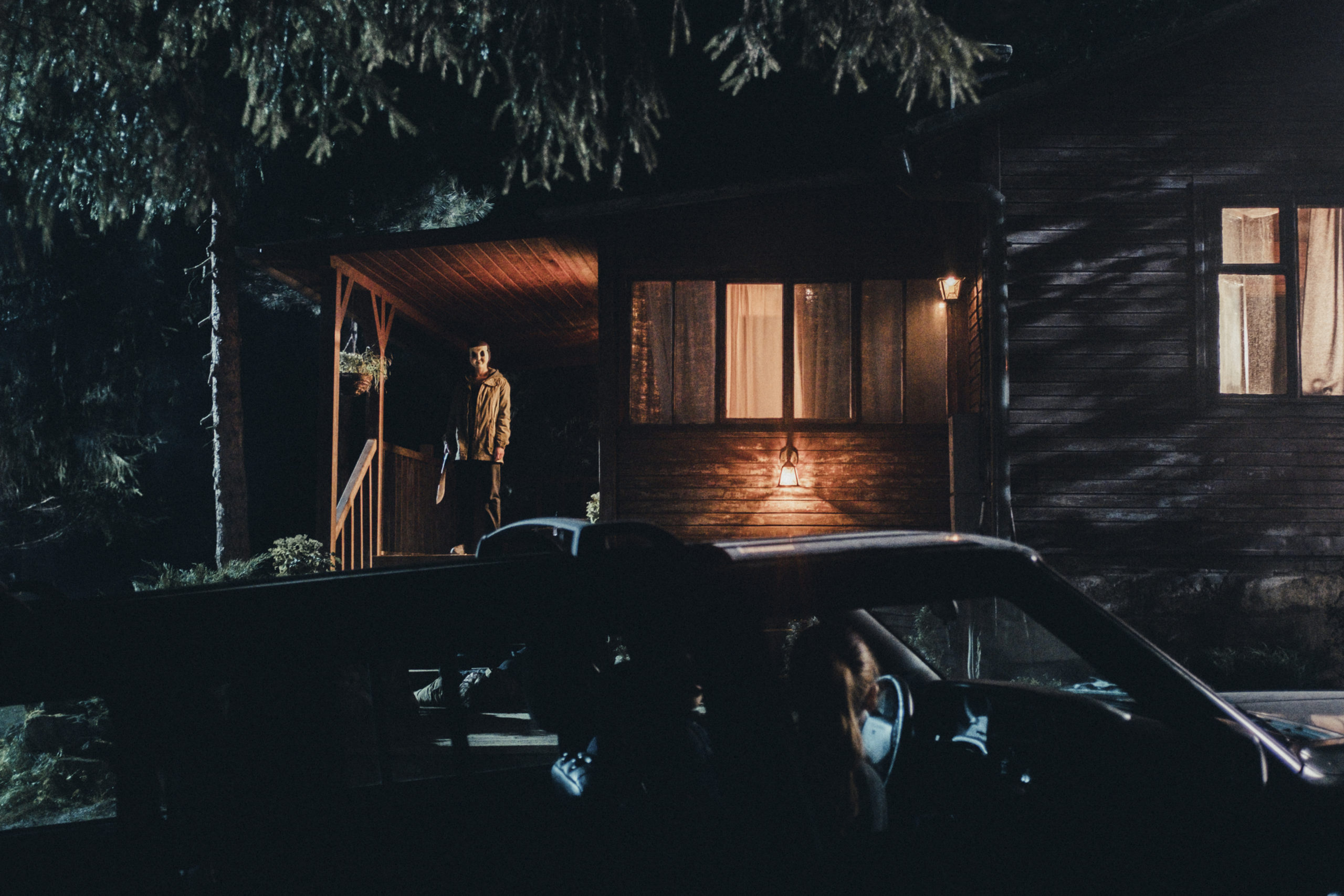
1. The opening music cue was inspired by The Shining.
The film’s opening establishing shot roving over the woods — with Bratislava, Slovakia standing in for the small town of Venus, Oregon — evokes the beginning of Stanley Kubrick’s The Shining, which was also a point of reference for the score.
“When we were scoring this, we looked at The Shining,” says Courtney Solomon, referring to Wendy Carlos’ iconic main title theme. “‘Cause we were looking for how, even though it’s dated, they were in that open, sort of everything environment, musically.”
Justin Caine Burnett (I’ll Always Know What You Did Last Summer, 9-1-1: Lone Star) composed the score.
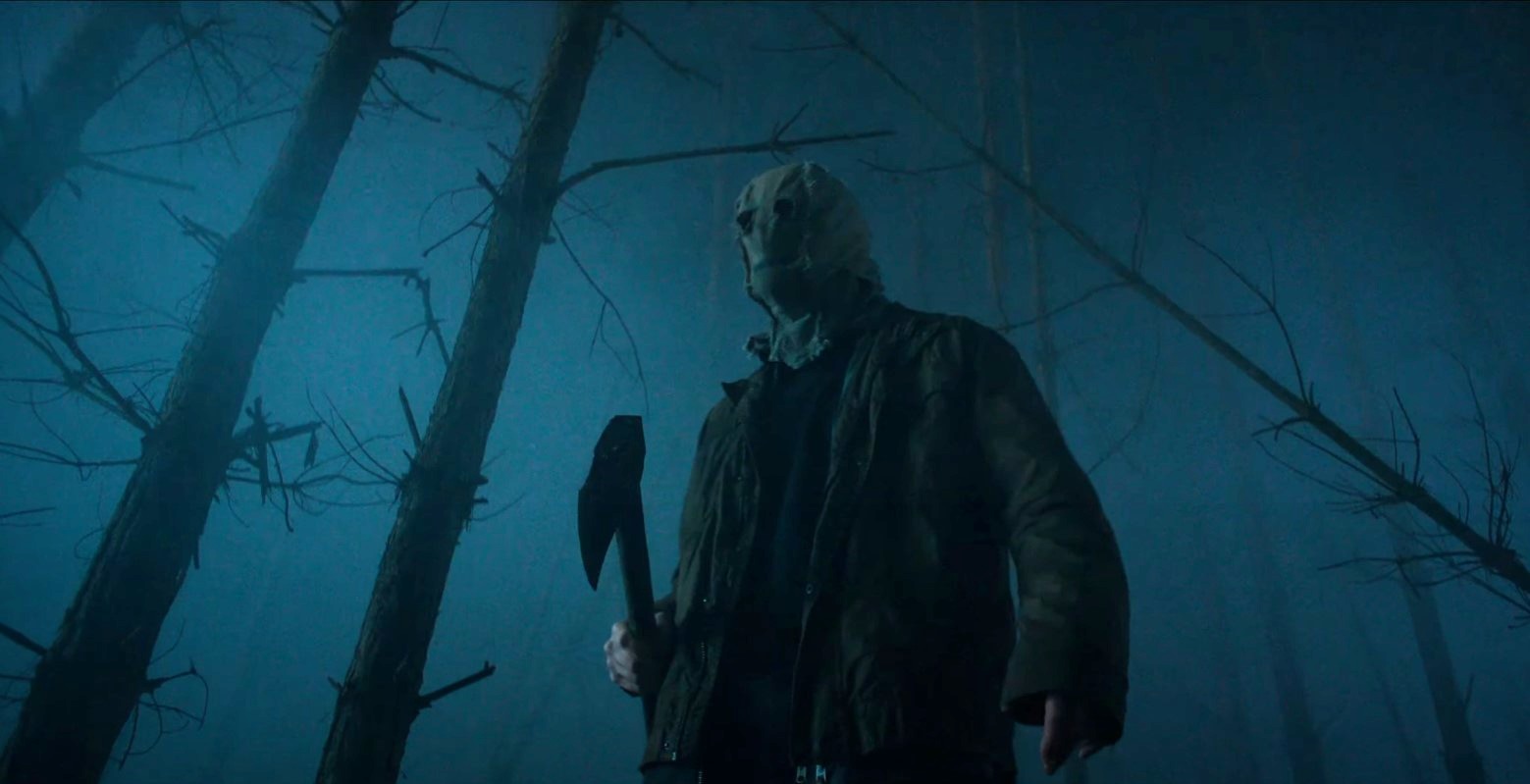
2. The cold open features an important character to the trilogy.
Shot together like one long movie, The Strangers trilogy will take place over a four-day period, with each subsequent entry picking up immediately after its predecessor’s finale.
Chapter 1‘s cold open features actor Ryan Bown — doing his own stunts, as Petsch points out — as a character who will play a bigger role in the coming installments.
“Jeff Morell, we’ll come to find out who this guy is as we go through all three chapters, but we sort of begin here,” Solomon notes.
“He’s a pretty important piece to this puzzle,” teases Petsch. “Some might say the piece.”
They also hint that viewers haven’t seen the last of Rachel Shenton’s Debbie, who Petsch’s Maya talks to on FaceTime, along with many of the townspeople from the diner scene.

3. Petsch was terrified of the project due to her love of the original film.
The shadow of the original Strangers looms large over Chapter 1. Petsch is “such a fan” that she was hesitant about doing a new version:
“I was terrified to touch that property. I think it’s an incredibly perfect horror film. I’ve seen so many horror films, and I feel like it’s one of the only ones that’s truly scared me to my bones, that I still think about all the time. So as we were trying to expound upon that story, with the second and third movies, we had to naturally repel the first story.”
Solomon similarly thinks highly of the original:
“I love the original Strangers. I wasn’t as big a fan of the sequel [2018’s The Strangers: Prey at Night], because it was just another story in a trailer park with the Strangers. I didn’t love that two of the Strangers got killed. That was just me personally; there are people that liked it. I was like, ‘I’d like to do something more interesting.’ In order to do it, to find that balance of retelling what made the first one so great as the basis to be able to launch off and tell the rest of the story.”
Petsch adds, “As we know, at the end of the first one, one of the last shots is Liv [Tyler]’s eyes opening. I’ve always wondered what happens after that.”
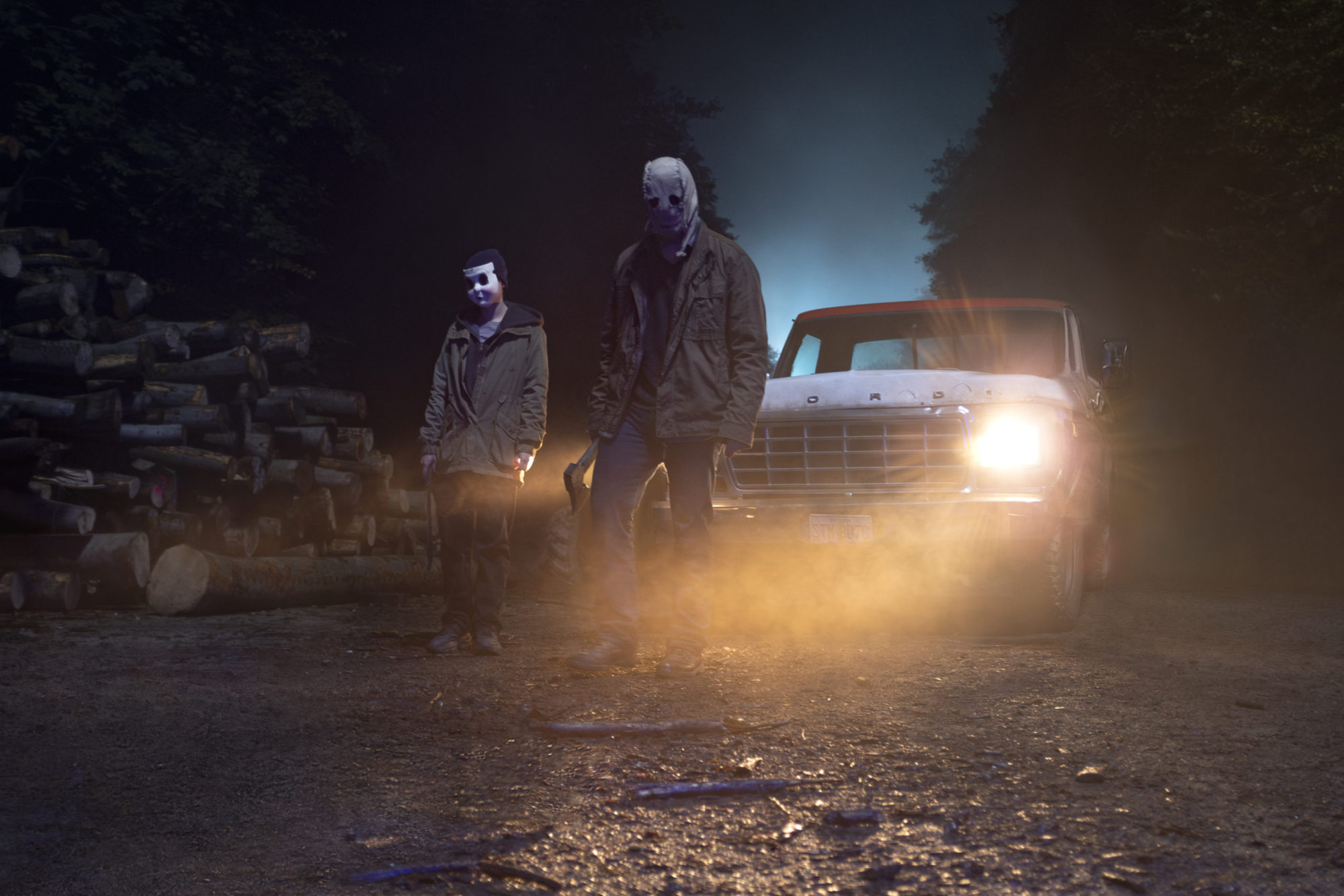
4. The killers’ hair is concealed to hide their identity.
Although the filmmakers opted to keep the look of the titular Strangers true to the original, Dollface and Pin-Up Girl’s hair is now concealed. This was a “purposeful change” to hide their identities, which will presumably be revealed later in the trilogy.
“We had a specific reason for doing it, obviously, because you do end up meeting a bunch of the folk from this small town,” explains Solomon. “You don’t know who’s wearing the mask, so if we had given up the hair that would make that identification a little bit easier.”

5. Petsch conceived the shower scene based on a personal fear.
In addition to starring in all three films, Petsch is an exclusive producer on the trilogy. More than a mere vanity credit, she had creative input throughout the stages of production, including the addition of Chapter 1‘s shower scene.
“This was not in the original script, the shower. Maybe our first week we were talking about what would be the scariest thing for me if I was in a situation like this,” she recalls. “I shared with you that every time I take a shower and I’m at the point where there’s suds of soap in my eyes and I’m shampooing, I’m always sure that’s when the serial killer’s gonna walk in. So we wrote this in, because I think that must be a common experience.”
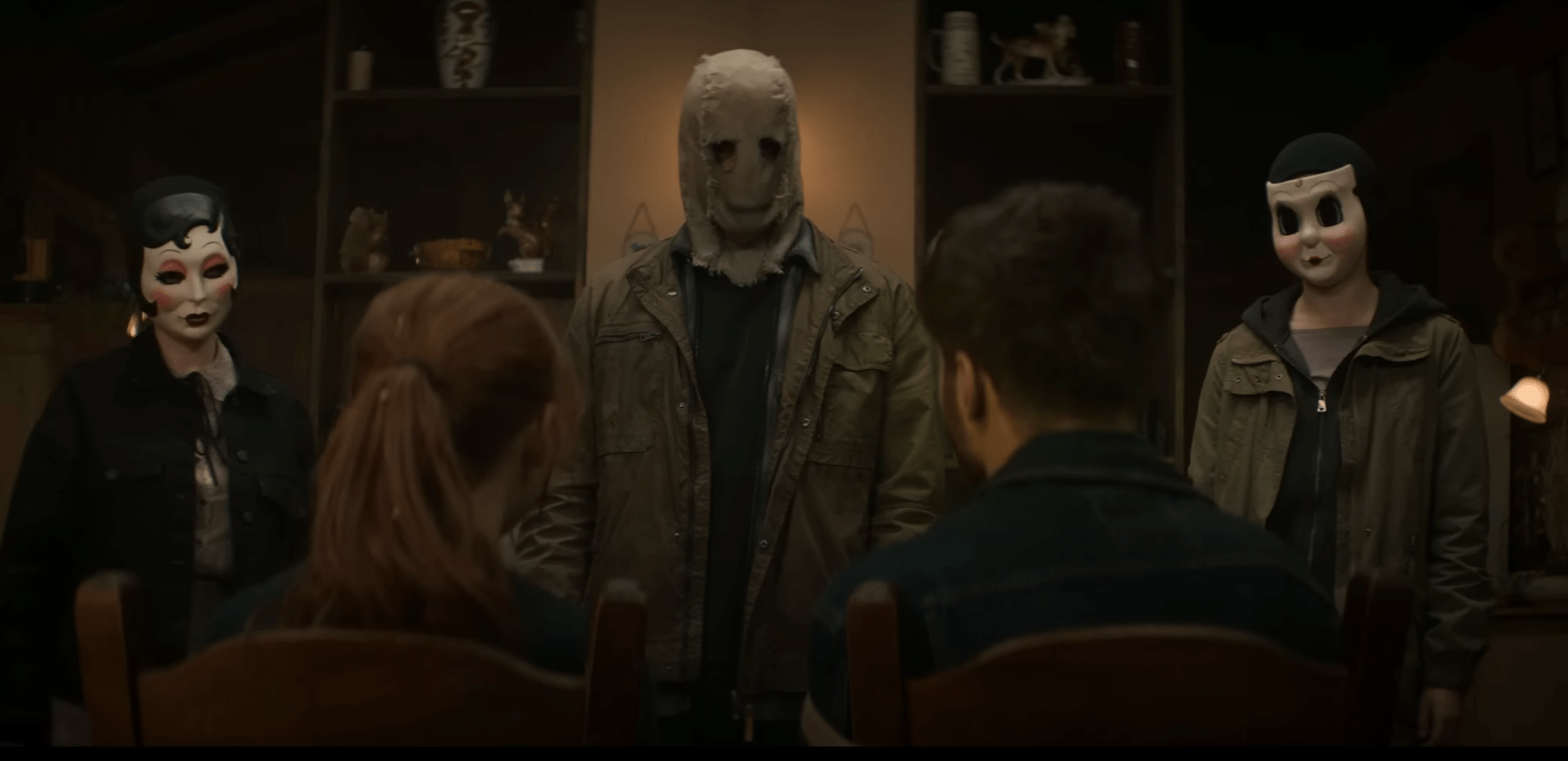
6. Remaking the original film was a conscious decision to kick off the trilogy.
It’s not until the end titles that the pair directly address the thought process behind launching the reboot trilogy with a retread of the original.
“Some people may go and watch this and go, ‘Oh, my god. It was a remake of the original.’ But actually this is just act one of our giant movie! If you watched it as a whole, then you’d be like, ‘Oh, shit. That’s just where it started,” says Solomon. “This is the 90-minute setup of the entire thing.”
Petsch concurs, “Don’t get me wrong. I also feel like the original is so good that it would be crazy to just do a remake of the original, but in order to tell the story that we were trying to tell, you kind of have to go back and do a repurposing of that story with these two new characters.”
“They did the whole first movie, the original, amazing, but that’s the jumping off point. This entire giant movie that’s become three chapters was done with a lot of love,” Solomon concludes.
The Strangers: Chapter 1 is available now on 4K Ultra HD, Blu-ray, DVD, and Digital.
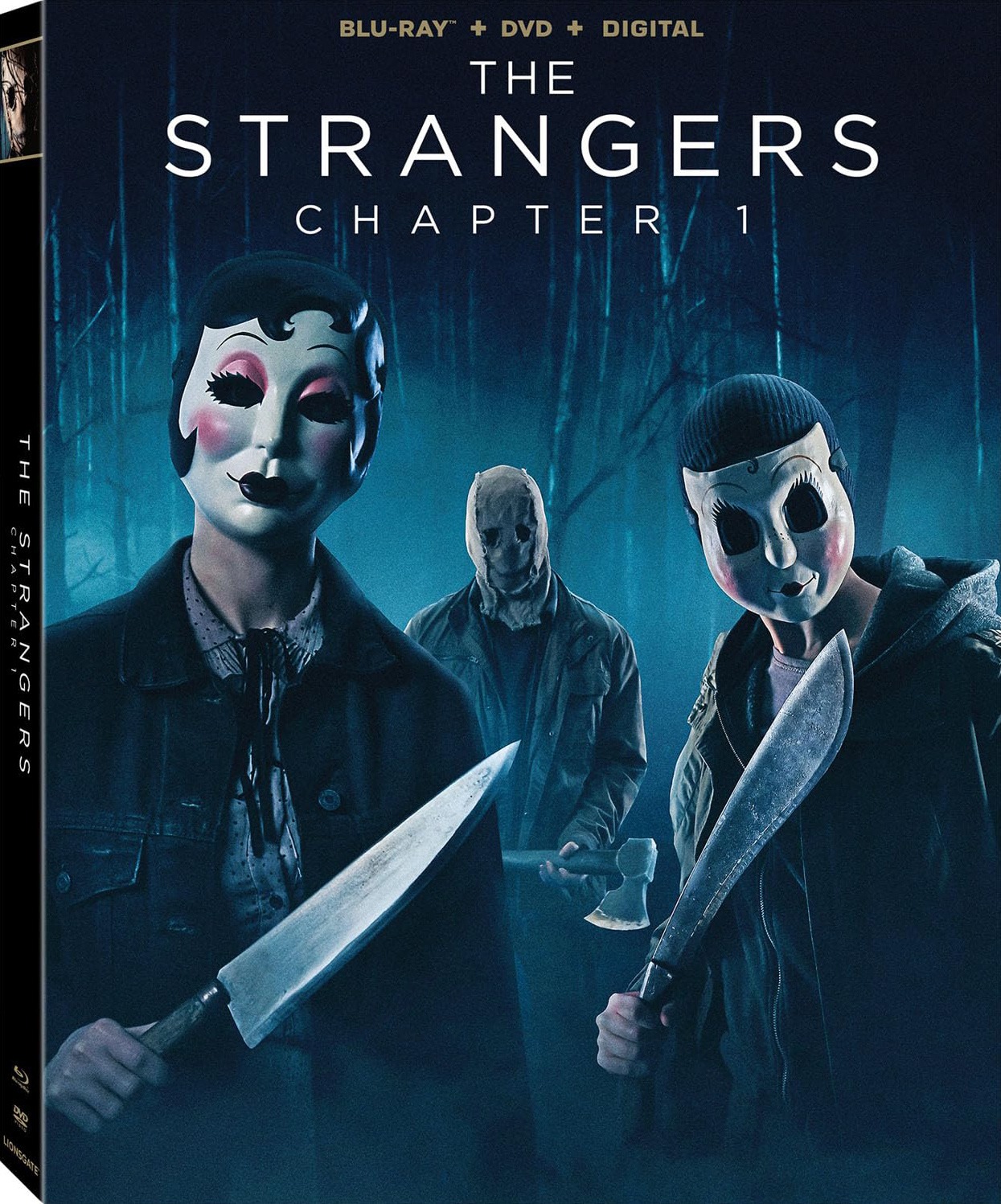
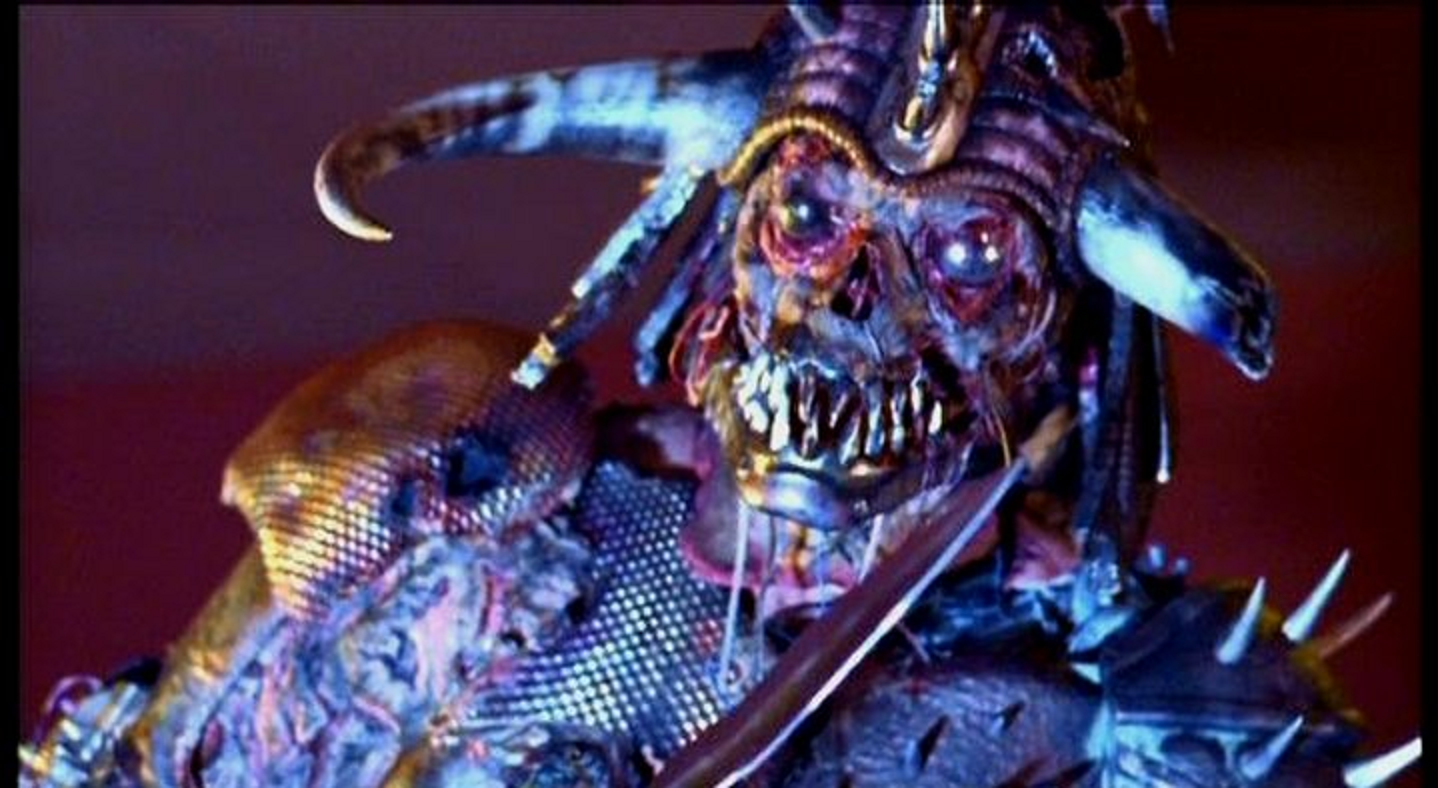



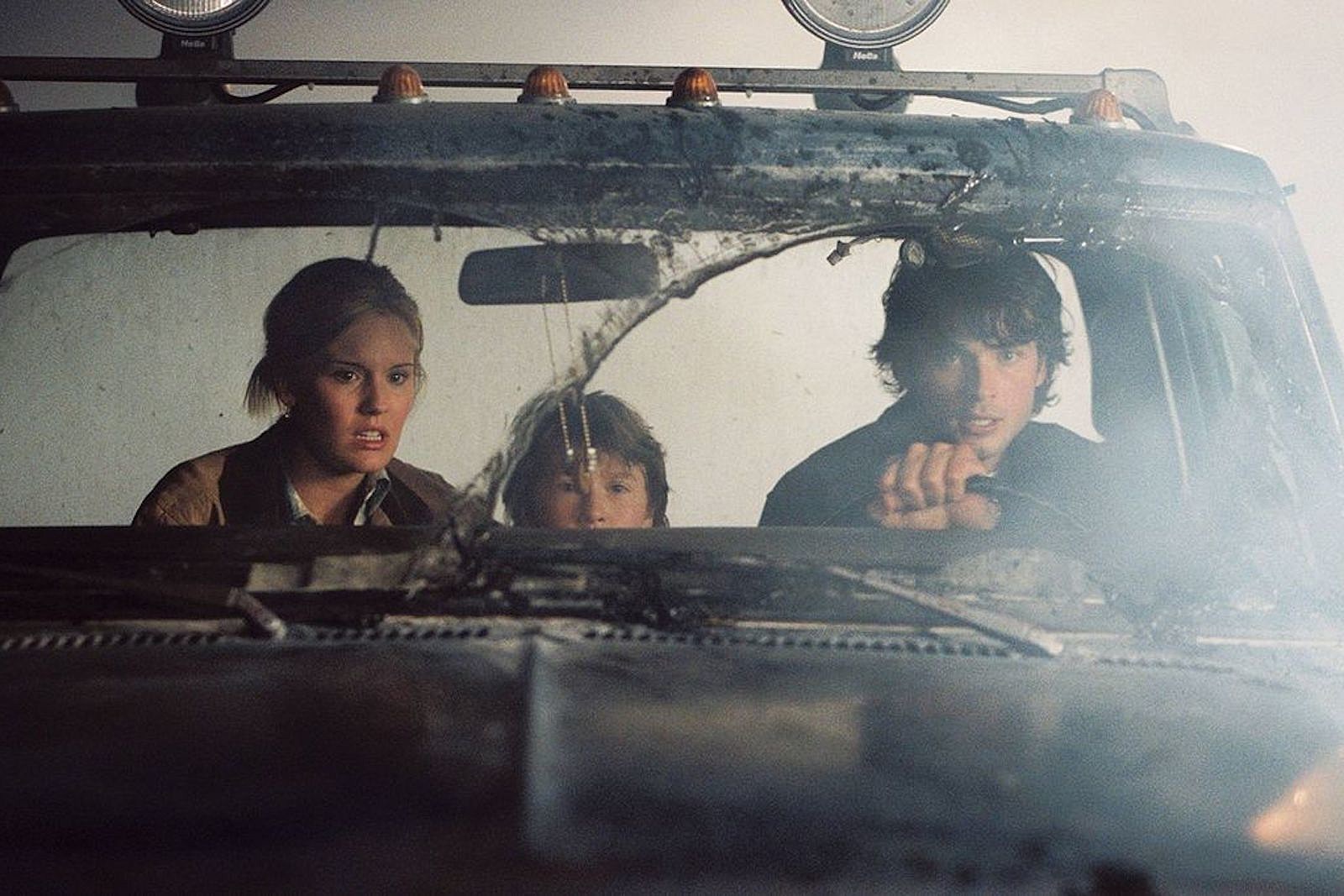



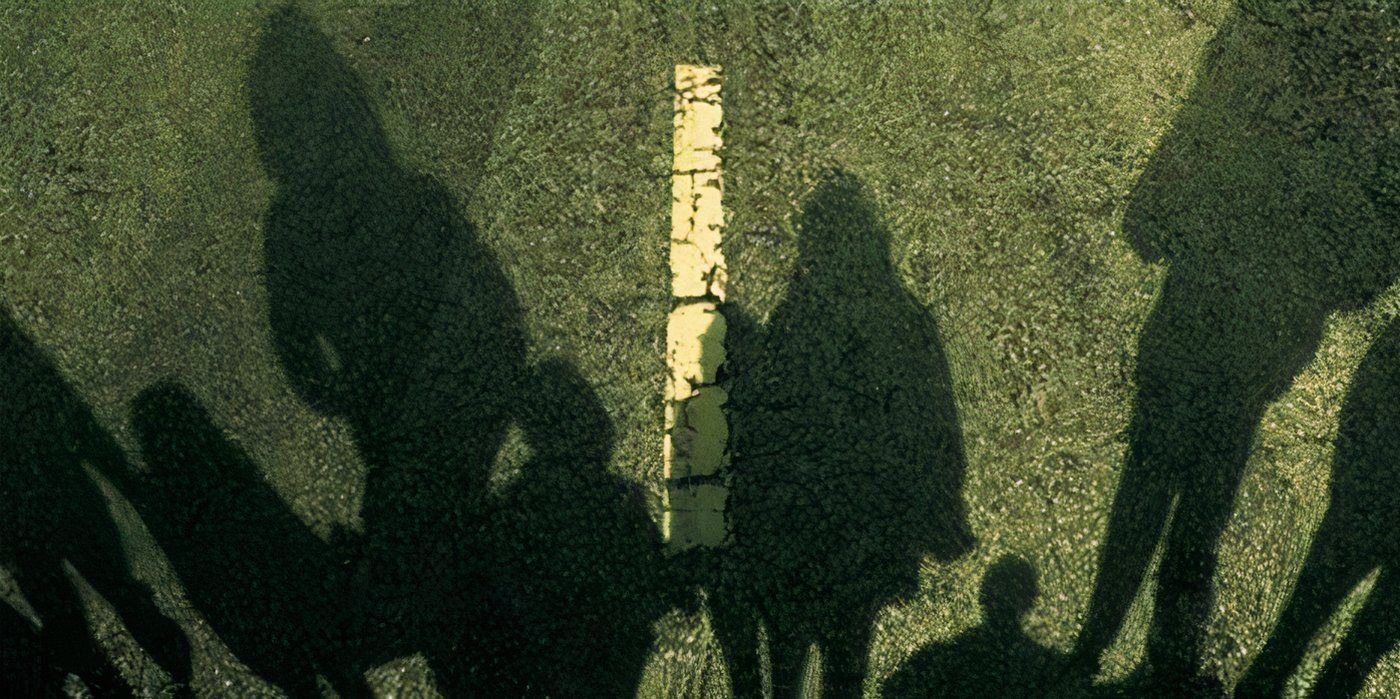



You must be logged in to post a comment.